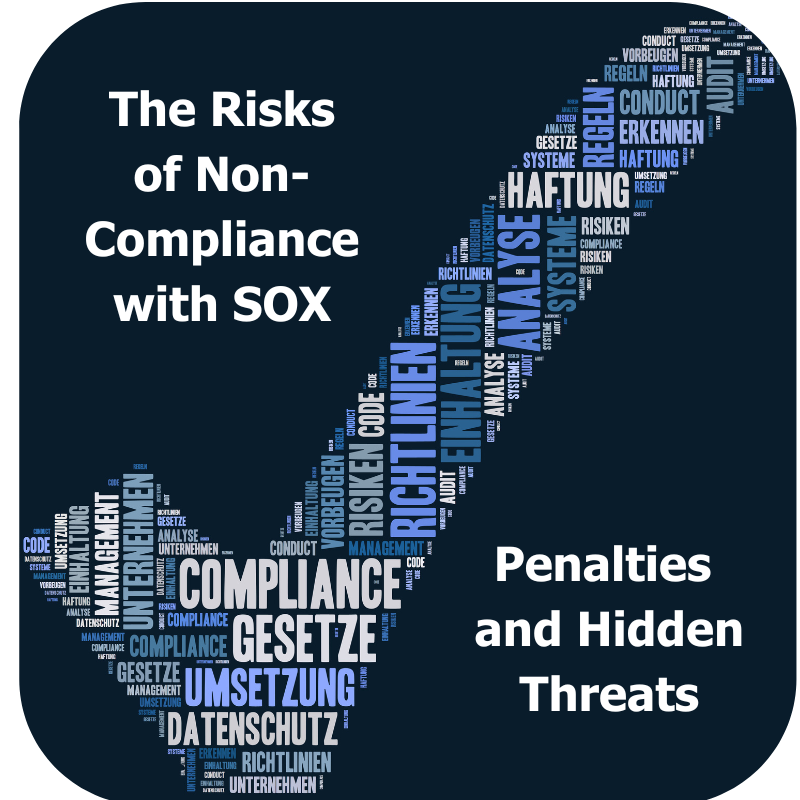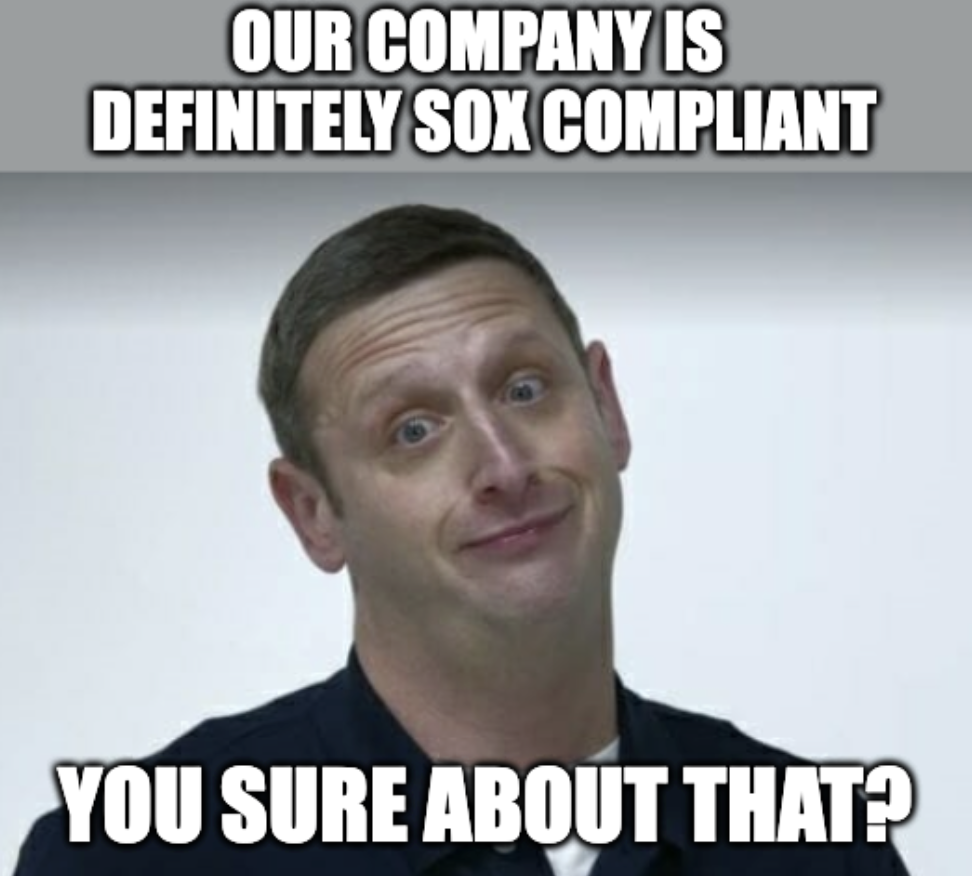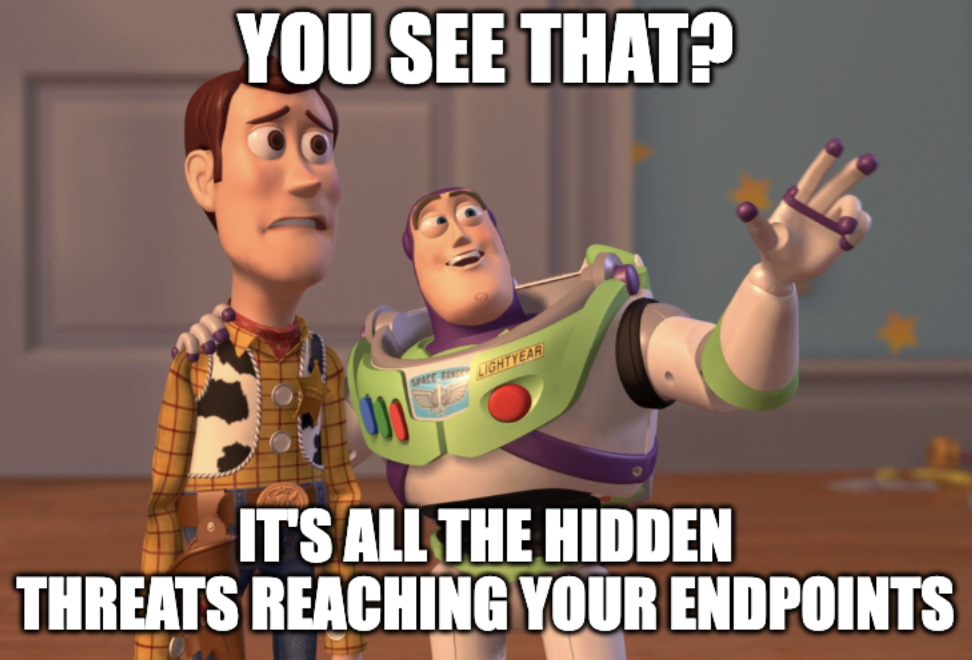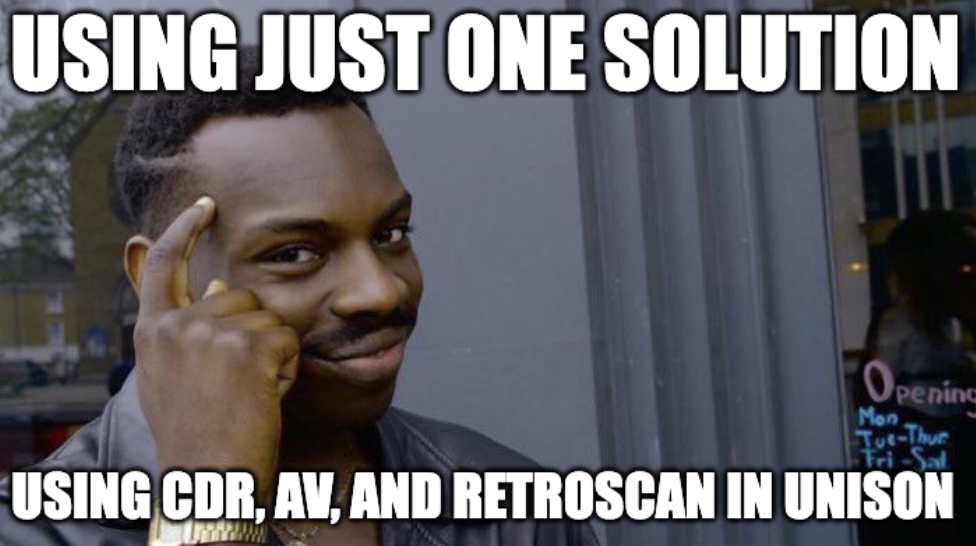The Risks of Non-Compliance with SOX: Penalties and Hidden Threats

Organizations often face significant challenges just keeping pace with cybercriminals. These attackers constantly evolve their strategies and tactics, trying to circumvent a company’s security technology. Unfortunately, for publicly traded companies in the US, there is an additional challenge on top of cybercriminals due to the regulatory requirements of SOX (Sarbanes-Oxley Act), which sets strict rules for data protection and handling.
On paper, having strict rules for data protection makes sense, but the implementation is challenging as most organizations have a complex IT environment. They have a diverse array of applications, platforms, and data sources, which complicate the process of implementing uniform compliance across the organization. Limited resources, budget constraints, and a shortage of skilled personnel further compound the struggle for compliance.

In this article, we dive deep into SOX and explore ways companies can avoid falling victim to hidden threats, which is one of the easiest ways to become non-compliant.
What is SOX?
SOX, also known as the Public Company Accounting Reform and Investor Protection Act, is a US federal law established in 2002 to strengthen corporate governance, accountability, and financial transparency. It focuses on improving financial reporting and internal controls within publicly traded companies.
A key aspect that SOX addresses is the significance of data security, as it necessitates establishing and maintaining effective internal controls over financial reporting. These controls safeguard sensitive data from unauthorized access, manipulation, and theft. The law mandates implementing robust data security measures such as access controls, encryption, and regular audits. By promoting these practices, SOX aims to foster trust and confidence in the integrity of financial systems and ultimately reduce the risk of fraudulent activities that could otherwise undermine investor confidence.
What are the Risks of Not Complying?
With SOX, non-compliance is not a viable option. The penalties that come with SOX are designed to deter misconduct and ensure companies take their obligations seriously regarding financial reporting and internal controls. Under SOX, the penalties affect individuals and organizations, ensuring that even the highest levels of a company’s leadership are motivated to comply.
Individuals engaged in fraudulent financial practices or obstructing investigations can face fines of up to $5 million and imprisonment of up to 20 years. Executives, notably the CEO and CFO, must personally certify financial statements accurately, facing fines and potential removal for false certifications.
Companies that fail to comply must contend with civil penalties imposed by the SEC ranging from $50k to $2.5 million, which for many companies would greatly damage their ability to operate. However, the worst offenders may lose their stock exchange listing, which will damage their reputation and lead to legal action from shareholders and investors based on financial misstatements or fraud by the company. With all of these negative impacts in play, companies could face bankruptcy as a result of non-compliance.

Hidden Threats Lead to Non-Compliance
Non-compliance in SOX does not just come from organizations choosing not to abide by the mandate but can also stem from being the victim of a cyberattack. For organizations subject to SOX, one of the worst types of cyberattacks to fall victim to are those originating as hidden threats in data. These threats include malware, ransomware, rootkits, and keyloggers, which go beyond being a nuisance and can cause serious trouble for companies that are affected by them.
SOX requires companies to establish and maintain effective internal controls over financial reporting, which includes safeguarding sensitive data from unauthorized access, manipulation, and theft. Rootkits and keyloggers allow cybercriminals unauthorized access to sensitive data, which may be stolen or manipulated. Malware and ransomware infecting financial files can compromise critical financial data’s confidentiality, integrity, and availability, leading to non-compliance with SOX’s data security requirements.
These attacks can also disrupt normal business operations, including financial reporting processes. They may alter or encrypt financial files, leading to inaccurate financial statements and reports. Companies failing to ensure the accuracy of financial reporting due to hidden threats can result in non-compliance with SOX’s provisions related to reliable financial disclosures.
Stopping Hidden Threats
The traditional approach of using antivirus (AV) software has been effective in detecting and stopping known threats. Still, it faces challenges in keeping up with the rapid evolution of the threat landscape. New malware is constantly being developed, making it difficult for antivirus solutions to stay current.

While AV remains valuable in cybersecurity strategies, relying solely on it may leave systems vulnerable to emerging and unknown threats. To enhance protection against hidden threats, organizations must complement AV with advanced and proactive security measures that can adapt and respond swiftly to the ever-changing cybersecurity landscape.
Knowing What to Stop
One of the most significant challenges with AV is that it relies on being able to detect a threat that is present, requiring having seen it before. With the constant evolution of new hidden threats, there is no way to stay ahead. This is where file sanitization, also known as Content Disarm Reconstruction (CDR), comes into play.
The CDR process addresses this limitation by reconstructing files, exclusively utilizing safe components, rather than solely relying on detection. This approach effectively eliminates high-risk elements, known malicious components, and suspicious code concealed within files, effectively neutralizing potential threats even if they are currently undetectable by conventional antivirus solutions.
Using an Effective Strategy
To overcome this challenge and create a robust defense against hidden threats, a combined strategy incorporating CDR, AV, and retroactive scanning analysis is necessary. AV delivers consistent, fast detection of known threats, augmented by CDR, which by rebuilding from known-safe components, eliminates most other hidden threats. Retroactive scanning provides the optics reviewing original copies of files with an AV engine days or weeks after sanitization to track the effectiveness of the CDR solution.

Votiro is a Unified Solution
Votiro surpasses traditional CDR in a number of ways, including offering optional integration with AV and RetroScan, which provides auditable tracking of threats eliminated by Votiro as they become detectable by AV. With its well-established CDR solution, Votiro empowers financial institutions to achieve a proven return on investment, meeting rigorous performance requirements while effectively safeguarding customers from hidden threats.
Designed for rapid implementation, Votiro adopts an API-centric approach seamlessly integrating into existing business workflows, providing immediate protection against cyber threats. Impressively short implementation times are achieved, with SaaS installations taking as little as 10 minutes and on-premises installations requiring only 90.
Contact us today to learn more about Votiro sets the bar for preventing hidden threats. You can also skip right to a free 30-day trial of Votiro if you want to see the platform in action.
News you can use
Stay up-to-date on the latest industry news and get all the insights you need to navigate the cybersecurity world like a pro. It's as easy as using that form to the right. No catch. Just click, fill, subscribe, and sit back as the information comes to you.
Sign-up Here!
Subscribe to our newsletter for real-time insights about the cybersecurity industry.



